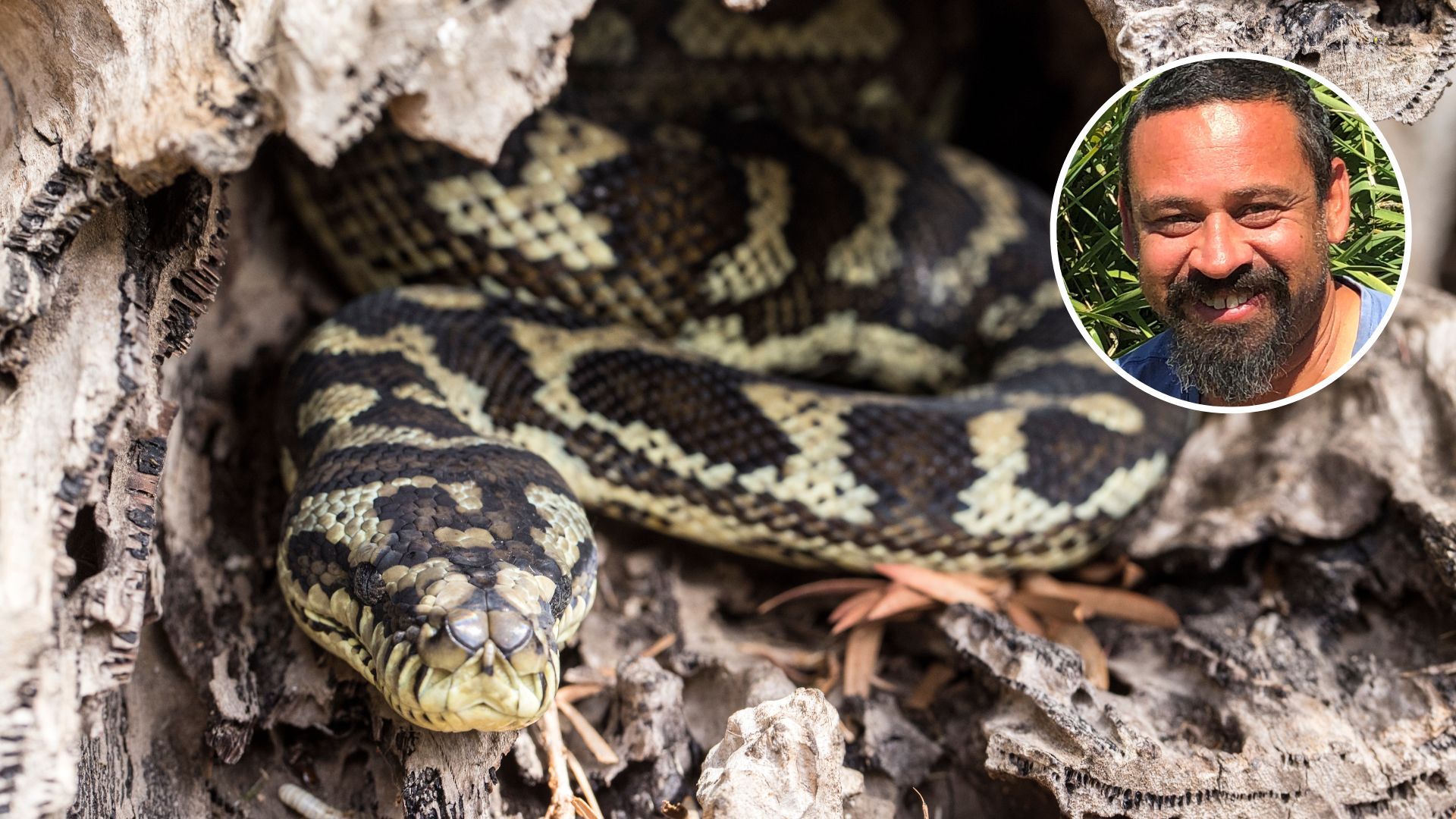While your first reaction may be to panic, these reptiles offer far more than a source of fear when it comes to the ecosystems they live in.
Senior Research Fellow in Ecology in the Charles Sturt University Gulbali Institute for Agriculture, Water and Environment Dr Damian Michael (pictured, inset) and member of the International Union for Conservation of Nature (IUCN)/Species Survival Commission (SSC) Snake Specialist Group explains the essential roles snakes play in the wild in light of World Snake Day on Tuesday 16 July.
What to do if you encounter a snake
Firstly, if you encounter a snake, it’s vital that you don’t panic or harm the snake. The best approach is to stay calm, distance yourself from the reptile and call a local wildlife service or snake catcher for advice.
Snakes are protected by law in all states and territories of Australia and may not be killed unless they threaten life. Offences under the Nature Conservation Act 2014 carry severe penalties. Snakes cannot be taken from the wild, kept without a licence, or traded without a licence.
Through better education of snake behaviour, it is possible to live safely with them rather than have them relocated outside of their home range, which is often detrimental to the snake.
Why do we need snakes?
Snakes sit at the top end of the food chain as predators, feeding on a variety of animals. This predatory nature is present from the smallest varieties through to larger species like carpet pythons.
The biggest benefit for humans when it comes to their hunting habits is pest control. For example, snakes feed on rats, mice, rabbits and a number of other animals known to cause just as much distress – and even more damage – when inside our homes and yards.
Without snakes, plagues such as the mice plague spanning much of eastern Australia in 2021 would become more common and widespread.
While they do feed on other, non-invasive species such as frogs, snakes tend to feed on the weaker individuals which keeps these populations healthier overall.
In some environments, however, the predator becomes the prey. Smaller snakes comprise the diet of a number of water birds, including the Australasian bittern.
In fact, tiger snakes will have up to 30 young at a time, and many of these become food for birds.
Where do snakes go in the winter months?
Snake sightings in winter decline significantly, often leaving people wondering where they disappear to.
The answer is quite simple. In cool climates, snakes enter a period of inactivity called ‘brumation’. Unlike hibernation which is reserved for warm-blooded animals to put on fat stores, brumation allows snakes and other reptiles to lower their metabolic rate and become inactive or semi-dormant.
Most snakes will go below ground for this or find cavities under rocks or in tree hollows.
However, this doesn’t mean that you won’t still see a snake on a warm, sunny winter’s day basking in the open. We see this particularly with darker coloured species such as copperheads and black snakes.
Sunning themselves enables their bodies to prepare for spring reproduction and some small species will even hunt if the weather is warm enough.
Surviving during brumation
Being inactive means less or no hunting and feeding for large snakes – so how do they survive during this period?
Snakes can go four to five months without food. In fact, some pythons can even make it through multiple years without a feed.
Inland carpet pythons and diamond pythons are capable of having their organs atrophy and shrink in size to reduce the amount of nutrients and food they need to survive. In doing so, a large feed could last them up to two years.
What to expect post-winter
Spring is the key time – as for many species – where new snake life and activity spikes.
Males are on the move looking for females to mate with, particularly in the early morning when it’s not too hot and not too cold.
In summer months we often expect to see more snakes out and about soaking up the sun, but there is a limit to their sun-loving habits.
In fact, we can see the opposite where there is a real risk of overheating for snakes on days hotter than 35 degrees Celsius.
Because snakes can’t pant or sweat to cool down, we can begin to see them coming into homes, on back patios and other shaded areas.






Social
Explore the world of social